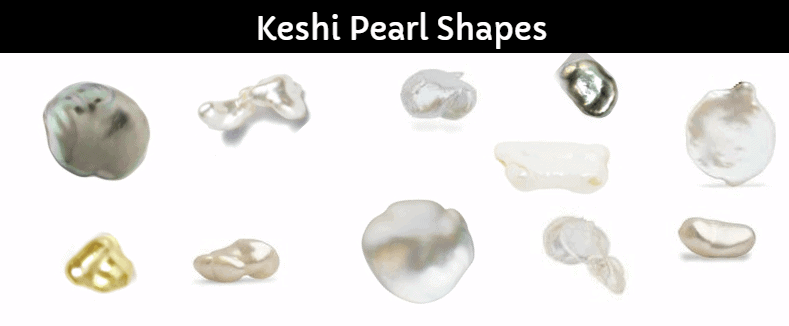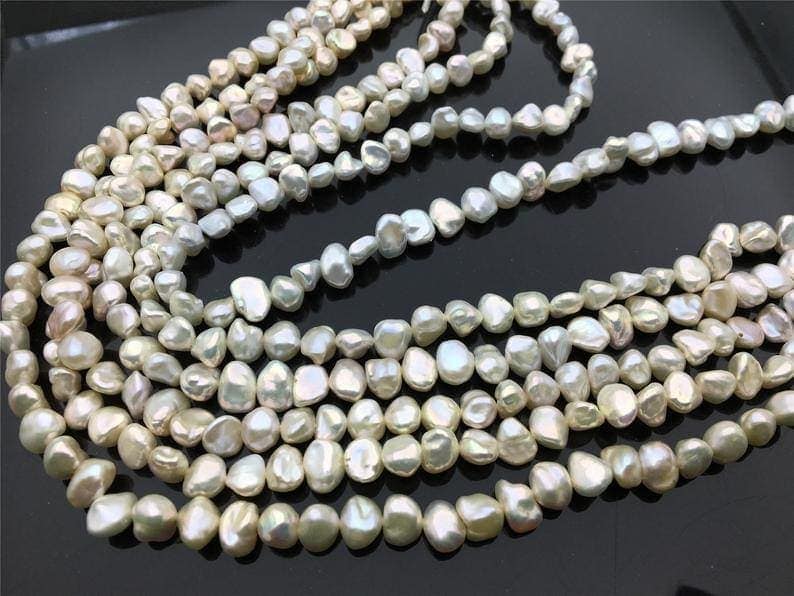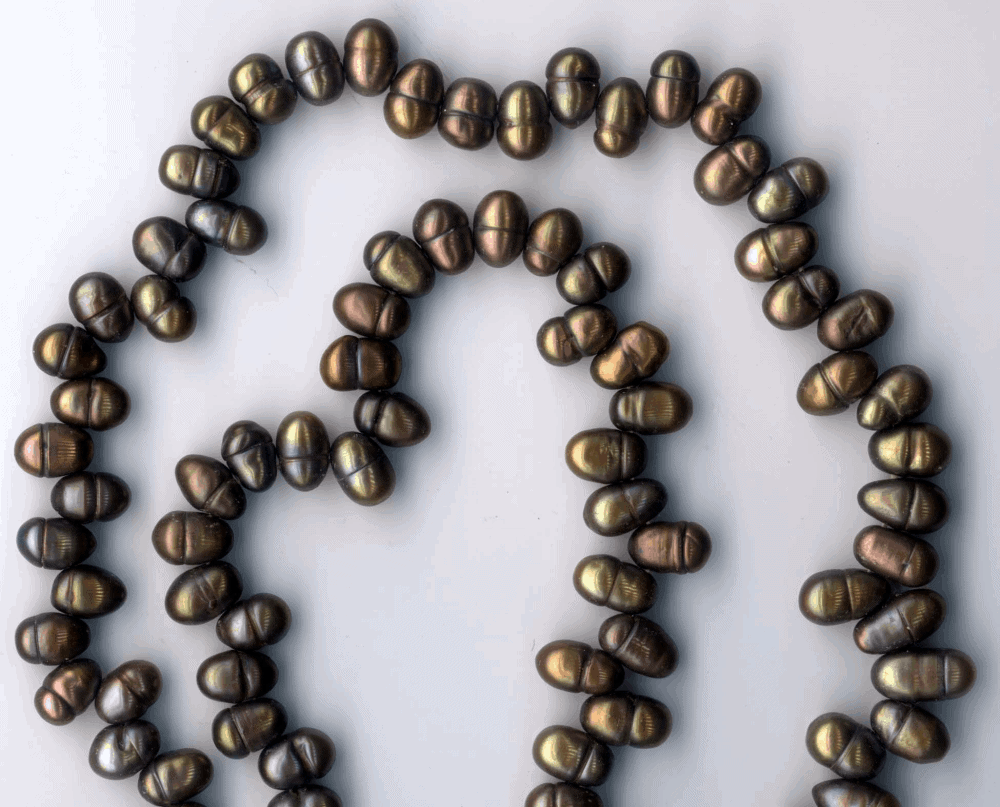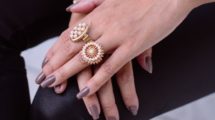People tend to think that keshi pearls are a type of pearl but they’re not. They’re the result of a specific formation and structure during the pearl cultivation process.
These unique pearls come in a range of shapes, with incredible luster and beauty but remain very affordable.
Here’s a look at keshi pearls and why they’re an excellent choice for an avant-garde, modern look.
3 Reasons to Choose Keshi Pearls
With so many pearl types on the market, keshi pearls are often ignored. In fact, not many people know about these pearls in the first place. But those who know the secret of keshi pearls appreciate their unique beauty.
Here are three reasons to choose these pearls:
1- Keshi Pearl Jewelry is Unique
Because of their unique shapes and varying sizes, keshi pearls are a creative challenge for jewelry designers who have to incorporate these features into the piece of jewelry.
This means that keshi pearl jewelry often end up looking unique and stylish, with each being different. You’ll be hard-pressed to find two pieces that are identical to each other.
And because these pearls aren’t the norm, they challenge the status quo, making their own mark. For any woman wanting to stand out, keshi pearls offer the perfect option.
2- Keshi Pearls Are Natural
While all pearls on the market have been nucleated and are picked out for perfection, keshi pearls grow on their own. They’re the closest we get to natural pearls that are formed without human intervention.
3- Keshi Pearls Are Lustrous
We’ll talk about this point more below, but keshi pearls are highly lustrous because of their structure and composition.
They’re solid nacre, without any nucleus made of foreign matter. As a result, the interaction with light is exceptional, as light penetrates all the way through and refracts, creating the highly sought-after iridescent luster that is probably the most important value factor when grading pearls.
The luster of keshi pearls doesn’t easily diminish, keeping keshi pearl jewelry shimmering and shining in beauty for decades.
If you’re intrigued by keshi pearls, keep reading, as we cover what you need to know before you buy.
What are Keshi Pearls?
Keshi pearls are an ‘accident’ of the pearl culturing process but they’re technically not cultured pearls. This is because keshi pearls are by-products and aren’t created on purpose.
Keshi pearls can form in a few different ways:
- After the mollusk has been nucleated, a piece of the already forming pearl chips or fractures inside the mollusk. As the piece irritates the creature, it begins to secrete nacre over it, creating a second, unique pearl.
- The mollusk rejects the implanted nucleus before the pearl has begun to form properly. The creature continues to secrete nacre over the formed pearl sac.
Because of the way they’re formed, these pearls are 100% solid nacre. They don’t contain bead nuclei like most other pearls. Which is why they’re considered non-nucleated and therefore non-cultured pearls.
What this means is that keshi pearls are exceptionally lustrous, as they’re made entirely of nacre and often have stunning orient or luster or both. The lack of a beaded nucleus also means that keshi pearls form in random shapes.
These factors make each keshi pearl unique and highly collectible.
Why Are Keshi Pearls All Shapes?

Because there wasn’t a bead or perfect nucleus to assist the mollusk in creating the perfect pearl, keshi pearls are typically random in shape, ranging from thin long pearls to round flat ones. You’ll very rarely find perfectly round keshi pearls.
Like we mentioned before, keshi pearl shapes inspire designers to create stylish and different jewelry.
Whether casual and bohemian or stylish and chic, keshi pearls lend themselves well to all style of jewelry.
Are Keshi Pearls the Same as Baroque Pearls?
Baroque pearls refer to all pearls that are irregular in shape. It’s a general, broad term that encompasses all types of pearls with varying shapes. Under this categorization, keshi pearls are a type of baroque pearl.
Keshi pearls, on the other hand, are so classified because of how they’re created. They’re the pearls that were formed out of an abnormality during the culturing process.
It’s like fingers and thumbs… all thumbs are fingers but not all fingers are thumbs. You get what we mean.
Why Are They Called Keshi?
Keshi is the Japanese word for poppy seed. It’s not surprising that keshi pearls were first noticed in Japan, because that’s where the art of culturing pearls originated. Akoya farmers would notice these pearls among the pearl harvests and because of their typically small sizes, they called them ‘poppy’ seeds.
Are Keshi Pearls Valuable?

Unfortunately (or fortunately depending on which side of the argument you’re on), because of the advancements in pearl culturing techniques and the ability to x-ray and screen the mollusks today, keshi pearls are becoming increasingly rare. This is especially the case with South Sea keshi pearls which are extremely rare.
Farmers are able to pick out oysters or mussels that show abnormal activity and to re-nucleate them before they form keshi pearls. As a result, these little unique pearls are getting harder and harder to come by, unless deliberately grown.
Because they’re much less valuable than their perfect cultured counterparts, keshi pearls aren’t worth much in terms of monetary value for the farmer who’d much rather have an oyster create a regular pearl than an irregular, non-nucleated keshi pearl.
Most keshi pearls that come today either from specific baroque-pearl producing farms or from pearl farms that don’t have the technology to pick out and eliminate keshi pearl producing oysters.






Add Comment